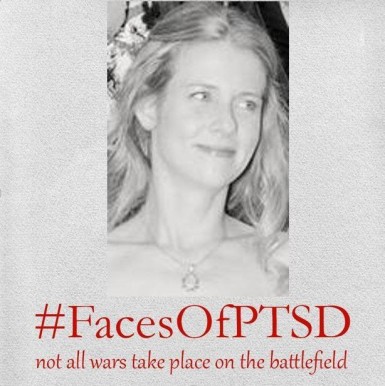Not All Wars Take Place on the Battlefield
“To look at me, you’d think there’s nothing wrong. We could have a conversation and you’d never suspect that behind my friendly smile there’s a private war raging. Beneath nightmares and unbidden thoughts are wounds that haven’t yet healed, scars that never will…”

And so begins, Changing My Brain, the first essay I have ever written for a national publication, the Globe and Mail.
Grounded in the psychological concept of neuroplasticity, a brain’s ability to reorganize and create new neural connections to compensate for trauma, injury, or disease, my article was never intended to be merely a narrative confession. It was meant to be an eye-opener, an explanation, and an absolute declaration to the whole damn world, “This is who I am, that is how it happened, and here is what I intend to do to about it.” I had just gotten so sick and tired of justifying myself to everyone who didn’t understand how I could behave this-way-or-that, or why I dealt with everything like such-and-such, where was my head, when would I get it together, and what the hell was wrong with me, anyways?!
Published in September 2013, Changing My Brain was the answer to all of that, and more.
In addition to openly discussing my history of childhood sexual abuse, rape, and domestic violence, the essay detailed my sincere efforts to heal myself by attempting to alter the regular pathways my brain cycled when triggered, a vicious Mobius strip constantly looping through painful, traumatic memories and flashbacks, feelings of perpetual fear, guilt, and shame. I had begun to map new routes in my mind, and while the old ones hadn’t overgrown yet, or disappeared entirely, as I would have liked, the knowledge that we can change our brains felt too precious and important not to share. I wrote through scorching tears, and after it was published, I cried again. Only about a hundred and fifty more times.
I thought I’d had my final “say” on the subject of PTSD.
As it turns out, I was wrong, there’s still plenty left to discuss…
Recently, Christine White (Heal Write Now) published a blog post concerning the lack of women with PTSD represented in online image search engines. A brief personal investigation confirmed it as fact. Apparently, according to Google and Bing, at least, women do not get PTSD, nor does the average Joe, despite solid evidence to the contrary. This is a dangerous misconception, because it has the power to alienate the vast majority of those suffering from post-traumatic stress disorder: everyday people who do not wish to be invisible, discounted, or silenced. Women, for example, survivors. People like me.
An important conversation ensued on the Heal Write Now Facebook page. Dawn Daum and Joyelle Brandt (Trigger Points Anthology) joined in, along with myself and fellow Canadian, Jodie Ortega (Breaking the Silence), and within minutes, we had decided to spark the flames of change. We need your help! Join us. Please see below for a list of the ways you can help to make a difference…
What is the #FacesOfPTSD campaign?
#FacesOfPTSD is a social media campaign set to kick-off this Friday, May 6, 2016.
Survivors who identify as having PTSD will flood social media with photos of themselves, along with the tagline, “Not all wars take place on the battlefield,” and the hashtag #FacesOfPTSD. Our goal is to alter the current landscape of social media and search engines (Google, Bing) to include all trauma survivors, particularly women who are rarely represented, in order to reflect more accurately the #FacesOfPTSD.
TOGETHER, WE CAN MAKE IT HAPPEN!
Why the #FacesOfPTSD campaign?
There is a common misconception in our culture about who suffers from Post-Traumatic Stress Disorder (PTSD) and what it looks like. A quick Google image search will lead you to believe that the majority of those living with PTSD are men in uniform, when the reality is that women are twice as likely to develop it as men, and it can be acquired in a number of ways. Not all wars take place on the battle field.
How can you make a difference?
- “Attend” and share the #FacesOfPTSD event scheduled for Friday, May 6th
- On May 6th, share an image of yourself—or if you don’t live with PTSD but still want to show support, share one of the images posted on our page—and be sure to include the hashtag #FacesOfPTSD
- Use any of the #FacesOfPTSD campaign images if you publish a blog post or any articles about PTSD
Know the facts:
Women and children get PTSD. Women get it twice as often as men. Children get PTSD. Men get PTSD and women in the military get PTSD, too, typically from sexual assault rather than combat
Let’s make a change!
It’s important to accurately represent the thousands of women and men living day to day, while doing the best they can to manage flashbacks, constant triggers and the debilitating medical and mental health effects of this disorder. It’s time to recognize the many #FacesOfPTSD.
*
Related articles:
http://www.elephantjournal.com/2016/05/ptsd-isnt-a-he-facesofptsd/
http://www.huffingtonpost.com/dawn-daum/not-all-wars-take-place-o_b_9807110.html
Reblogged this on lilacs in october and commented:
#FacesOfPTSD is a grassroots campaign designed to change common misconceptions surrounding PTSD… Read to find out more!
LikeLike